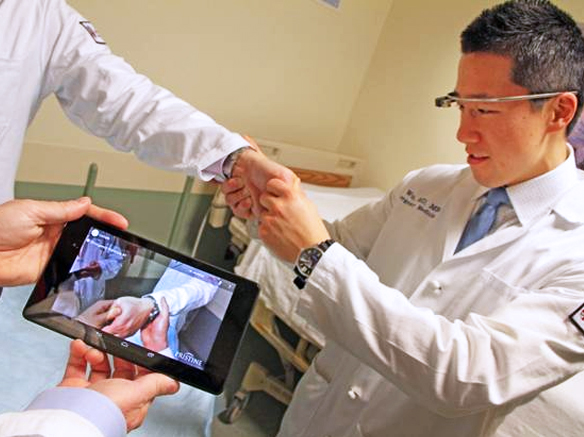The potential of Wearable Tech in the workplace
A few PDDers and I attended the Wearables 2015 conference in London, which was a great chance to see the latest trends in the wearable tech field. A range of exhibitors from startups to industry giants were displaying impressive devices such as Open Bionic’s 3D-printed Prosthetic Limbs and Samsung’s Oculus Rift-based VR headset.
I was particularly curious to see whether the industry has finally developed something that has the potential to change people’s lives and provide real benefits, because in the past few years, there have been very few products that deliver a meaningful user experience (see a previous blog post on the “Why of Wearables”).
So it was interesting to see that wearables might provide real value in the workplace. Wearables for work can be tailored to the needs of a specific task instead of being designed for general use, such as Intel’s smart Jacket prototype which allows workers in hazardous environments to detect dangerous gases using sensors built into the jacket. Likewise, smart glasses could provide access to critical information in an urgent situation, allowing people to see the needed information without having to turn their gaze toward a screen. Boeing are testing Google Glass with their employees, and medical professionals are exploring the benefits of giving smart glasses to their staff.
Moreover, the health benefits could be huge. Along with the usual wearable health programs to encourage employees to exercise more, wearables could be used to track posture and muscle strain, identifying health problems before they can cause serious damage. Wearables like Sun Friend UV sensing smart band could make sure employees in outdoor environments are not overly exposed to sunlight. Innovations like these could ensure a healthier happier workforce with less time lost due to injury.

A doctor uses Google Glass. Image vcredit: valeira.com
Like any new field of technology however, this progress comes with a dark side. With the rise of wearable tech and better ways to monitor employee data, we will soon start having to ask ourselves some hard questions about how much information employers should know about their employees.
For example, do you think your mid-week hangover is hard enough to hide already? Wait until your line manager can use an accelerometer to spot your slower-than-usual walk patterns. Having a tough time in your personal life but would rather not talk about it at work? Too late, your HR manger wants to talk about your sudden increase in blood pressure. Think personal reviews are tough? Well now your boss can use the GPS monitor in your smartwatch to calculate just how much time you wasted making coffee. Want to talk to a colleague about how your boss is turning your office into a police state using wearable tech? Unfortunately they forgot to switch their smart glasses live stream off and now the whole office is watching. Not even your thoughts are safe. As electroencephalogram (commonly known as EEG) headbands get cheaper and more accurate, management will be able to tell just how hard you are concentrating on work at any one time. And let’s say you are lucky enough to work for a company who respects your data and will never use it against you. That’s fine, until your company gets hacked and suddenly your personal body data is in the public domain.
I should probably stop describing this workplace dystopia before this turns into an episode of Black Mirror (which I recommend you should watch if you haven’t done so already.) Either way, as I stated at the start of this post, I still believe that wearables have potential and looking at what benefits they could bring to the workplace they are too big an opportunity not to explore.
What are your thoughts on wearables at work? Tweet @PDDinnovation #wearablesintheworkplace


